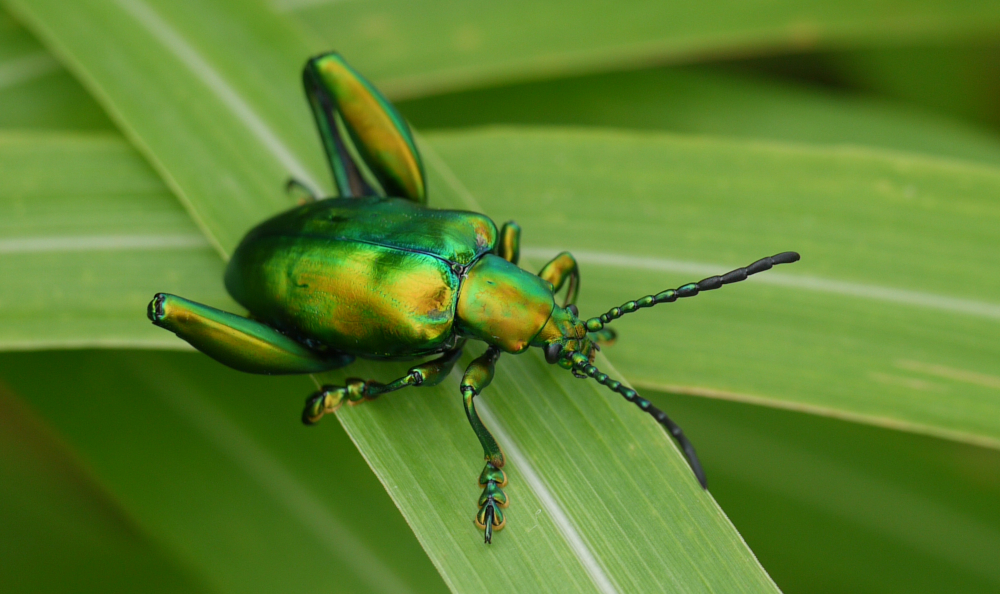Cannabinoids from hemp could be the basis for natural pesticides, according to research conducted at Cornell University.
Higher cannabinoid concentrations in hemp leaves led to proportionately less damage from pests chewing on them, according to experiments conducted under Larry Smart, a plant breeder and professor in the School of Integrative Plant Science at Cornell AgriTech’s College of Agriculture and Life Sciences (CALS).
The study opens the door for potentially developing pesticides that could be used on non-edible plants only. That restriction is due to the pharmacological properties of the compounds, which include CBDA, THCA and their precursor CBGA. These compounds are naturally produced by hemp plants and convert to more commonly known CBD, THC and CBG when heated.
‘Defensive compounds’
In the decades since scientists first identified cannabinoids, research has focused on their medicinal and intoxicating effects, but it’s never been clear why these plants evolved cannabinoids in the first place. Researchers have hypothesized that cannabinoids may protect plants from ultraviolet light, pathogens and herbivores.
“It has been speculated that they are defensive compounds, because they primarily accumulate in female flowers to protect seeds, which is a fairly common concept in plants,” said Smart, who is the senior author of the study, which was published in the journal Horticulture Research last month.
“But no one has put together a comprehensive set of experimental results to show a direct relationship between the accumulation of these cannabinoids and their harmful effects on insects,” said Smart, who is the senior author of the study, “Cannabinoids Function in Defense Against Chewing Herbivores in Cannabis Sativa L.,” which was published on Oct. 13 in the journal Horticulture Research.
“The study gives us insight into how cannabinoids function in natural systems, and can help us develop new THC-compliant hemp cultivars that maintain these natural built-in defenses against herbivores,” said George Stack, a postdoctoral researcher in Smart’s lab and the paper’s first author.
Fighting insects
The Cornell hemp breeding program started in 2017 by evaluating different commercially available hemp cultivars to see which ones were best suited for local climate, soils and environment, so recommendations could be made to farmers. Smart, Stack and colleagues noticed that varieties originating from a breeding program in Ukraine were all highly susceptible to Japanese beetles because they did not produce cannabinoids. Other varieties were not similarly susceptible.
“In the absence of cannabinoids, we saw heavy insect damage, and in the presence of cannabinoids, we saw much less damage,” Smart said.
In controlled feeding studies in the lab, the researchers isolated CBDA and CBGA, and painted the extracts onto an artificial insect diet in a range of concentrations. Larvae grew less and had lower rates of survival as cannabinoid concentration increased, according to the paper.
The Cornell program cannot work with high THCA (the intoxicating compound found in marijuana) plants due to federal restrictions, so THCA as a pesticide was not tested in this research, Smart said.
‘Exciting’ research field
“The potential use of cannabinoids as a pesticide is an exciting area for future research, but there will certainly be regulatory barriers due to pharmacological activity of the compounds, and more studies are needed to understand what pests cannabinoids will be effective against,” Stack said.
Future work will investigate if sap-sucking insects, such as aphids, are also inhibited by cannabinoids. The researchers are also exploring whether species from other plant genera that make cannabinoids, such as the South African woolly umbrella plant, could also benefit from their insecticidal properties. If so, it would point to an example of convergent evolution, in which the same adaptation independently arose in different species at different times and locations.
Research team
Co-authors of the research, all in the College of Agriculture and Life Sciences, include Ping Wang, professor of entomology; Virginia Moore, assistant professor of plant breeding; Jocelyn Rose, professor and chair of the Plant Biology Section in the School of Integrative Plant Science; Julie Hansen, a senior research associate in the School of Integrative Plant Science; technicians Stephen Snyder and Michael Quade; postdoctoral researchers Glenn Philippe and Jacob Toth; and Jamie Crawford, a research support specialist.
Other co-authors include John McKay, a professor of plant genetics at Colorado State University; and Nick Jackowetz, former chief scientific officer at Rochester-based Cirona Labs.
The project was funded by the New York State Department of Agriculture and Markets through Empire State Development, the state’s economic development corporation.

